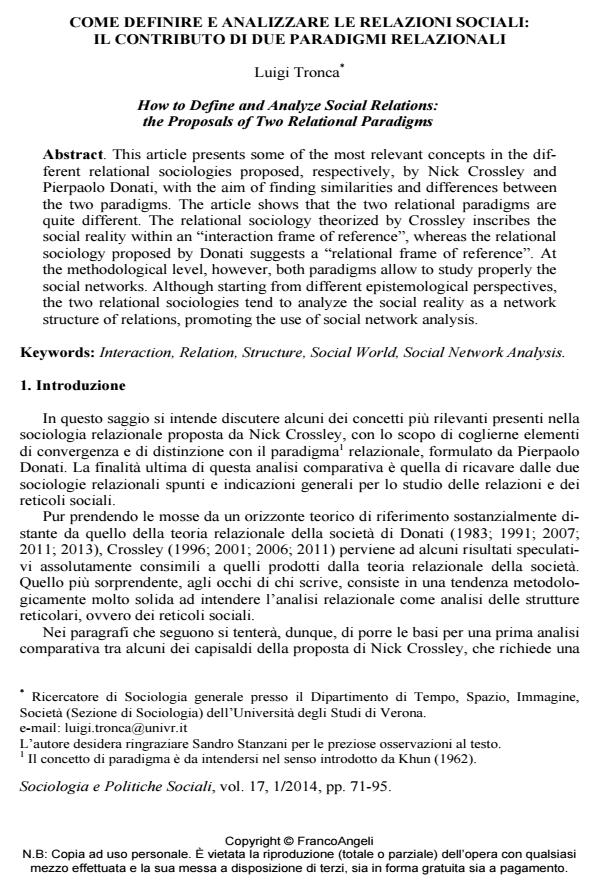How to Define and Analyze Social Relations: the Proposals of Two Relational Paradigms
Journal title SOCIOLOGIA E POLITICHE SOCIALI
Author/s Luigi Tronca
Publishing Year 2014 Issue 2014/1
Language Italian Pages 25 P. 71-95 File size 140 KB
DOI 10.3280/SP2014-001005
DOI is like a bar code for intellectual property: to have more infomation
click here
Below, you can see the article first page
If you want to buy this article in PDF format, you can do it, following the instructions to buy download credits

FrancoAngeli is member of Publishers International Linking Association, Inc (PILA), a not-for-profit association which run the CrossRef service enabling links to and from online scholarly content.
This article presents some of the most relevant concepts in the different relational sociologies proposed, respectively, by Nick Crossley and Pierpaolo Donati, with the aim of finding similarities and differences between the two paradigms. The article shows that the two relational paradigms are quite different. The relational sociology theorized by Crossley inscribes the social reality within an "interaction frame of reference", whereas the relational sociology proposed by Donati suggests a "relational frame of reference". At the methodological level, however, both paradigms allow to study properly the social networks. Although starting from different epistemological perspectives, the two relational sociologies tend to analyze the social reality as a network structure of relations, promoting the use of social network analysis.
Keywords: Interaction, Relation, Structure, Social World, Social Network Analysis
Luigi Tronca, Come definire e analizzare le relazioni sociali: il contributo di due paradigmi relazionali in "SOCIOLOGIA E POLITICHE SOCIALI" 1/2014, pp 71-95, DOI: 10.3280/SP2014-001005